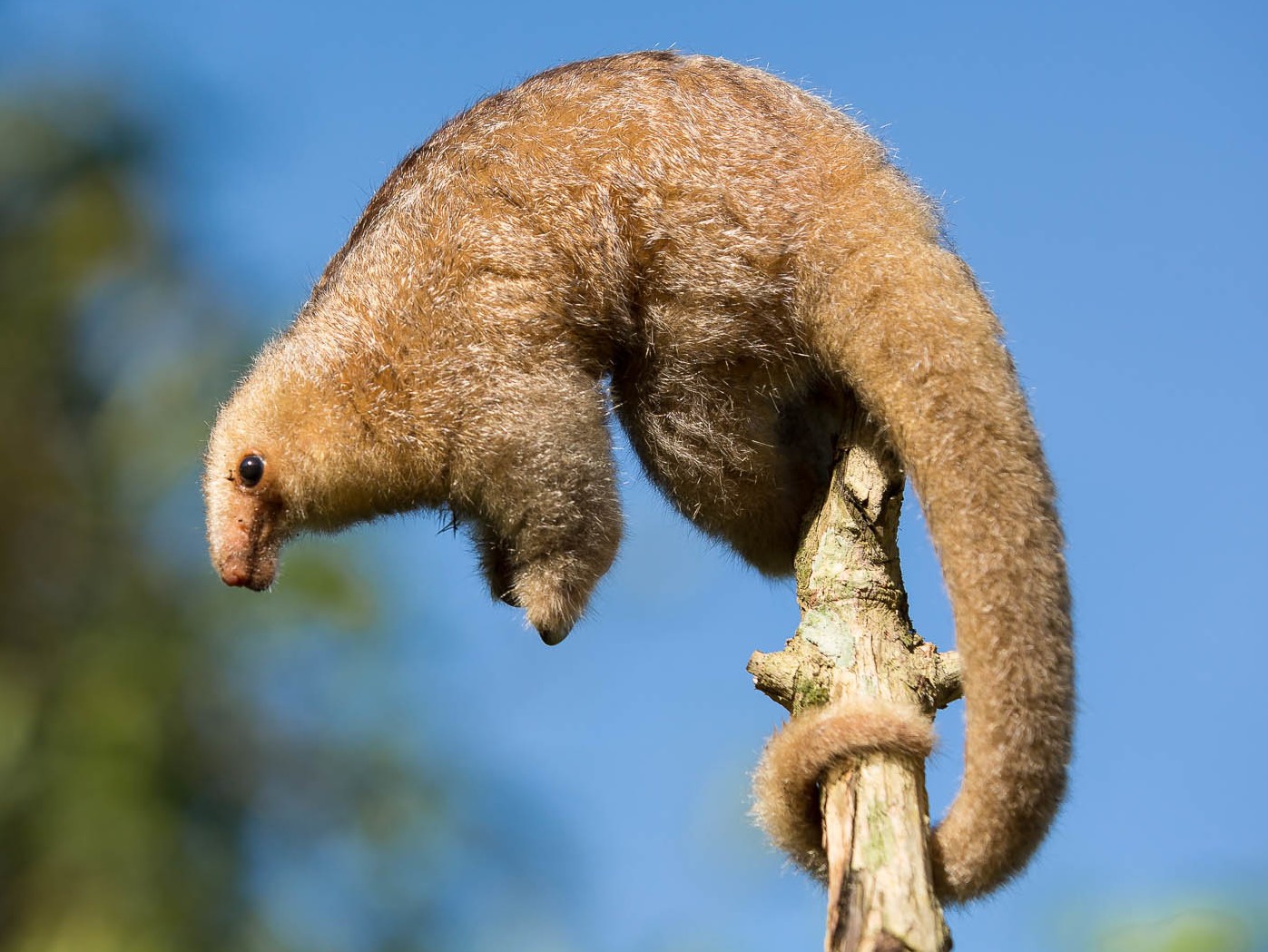Silky anteater
A species of Pygmy anteaters, Also known as Silky vermilingua Scientific name : Cyclopes didactylus Genus : Pygmy anteaters
Silky anteater, A species of Pygmy anteaters
Also known as:
Silky vermilingua
Scientific name: Cyclopes didactylus
Genus: Pygmy anteaters
Content
Description General Info
 Photo By Quinten Questel , used under CC-BY-SA-3.0 /Cropped and compressed from original
Photo By Quinten Questel , used under CC-BY-SA-3.0 /Cropped and compressed from original Description
Silky anteaters are the smallest living anteaters, and have proportionately shorter faces and larger crania than other species. Adults have a total length ranging from 36 to 45 cm (14 to 18 in), including a tail 17 to 24 cm (6.7 to 9.4 in) long, and weigh from 175 to 400 g (6.2 to 14.1 oz). They have dense and soft fur, which ranges from grey to yellowish in color, with a silvery sheen. Many subspecies have darker, often brownish, streaks, and paler underparts or limbs. The eyes are black, and the soles of the feet are red. The scientific name translates roughly as "two-toed circle-foot", and refers to the presence of two claws on the fore feet, and their ability to almost encircle a branch to which the animal is clinging. The claws are present on the second and third toes, with the latter being much the larger. The fourth toe is very small, and lacks a claw, while the other two toes are vestigial or absent, and are not visible externally. The hind feet have four toes of equal length, each with long claws, and a vestigial hallux that is not externally visible. The ribs are broad and flat, overlapping to form an internal armoured casing that protects the chest. They have partially prehensile tails. 
General Info
Lifespan
2.5-4 years
Diet
Silky anteater engages predominantly in an arboreal, frugivorous lifestyle, with a diet consisting overwhelmingly of fruits from the Cecropia tree. These silky anteaters also incorporate small insects and bird eggs into their feeding regime.
Appearance
Silky anteater is a small, arboreal mammal featuring a pair of soft, dense fur and a stout body. With long hind limbs and short forelimbs, it possesses sharp, strong claws, ideal for tree-dwelling. This creature primarily exhibits a golden-brown coat with varying hints of orange. The most distinctive aspect of its appearance is a pair of large, round eyes and a long, prehensile tail, inclusive of a hairless, padded underside--designed for gripping branches. Both sexes share similar features, with no notable variations due to age or subspecies.
Behavior
Silky anteater is a nocturnal, arboreal species known for solitary foraging activities facilitated by its prehensile tail and slow movement. Emphasizing a cryptic lifestyle, they are preyed upon primarily when sleeping during the day. Silky anteater's unique adaptation, two-toed feet, assists in feeding on ants and termites. They mark territories by secretions from their peri-anal gland.
Scientific Classification
Phylum
Chordates Class
Mammals Order
Anteaters and sloths Family
Silky anteaters Genus
Pygmy anteaters Species
Silky anteater